Winter 2016-17 Forecast 8 years ago
August 28, 2016
- Warm PDO ring should re-establish major cold over East and into Plains late
- Warm West
- Higher than normal uncertainty about when winter will start in earnest
- We are now quicker than the last forecast from July
- Still think January-March will be colder than November-January
- Analogs are colder than our forecast (for now)
This is what the first half of the winter season is expected to look like:
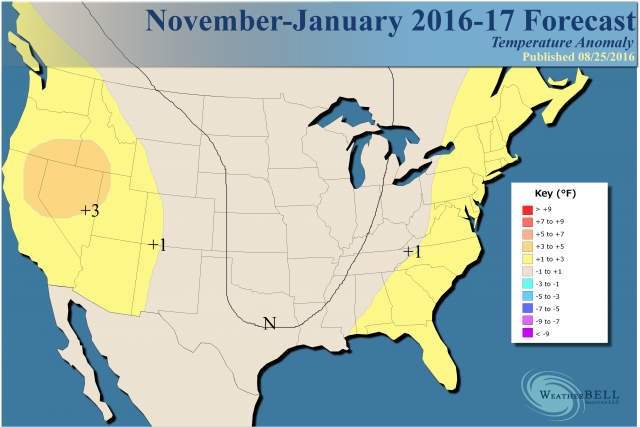
Sensible analog for November-January:
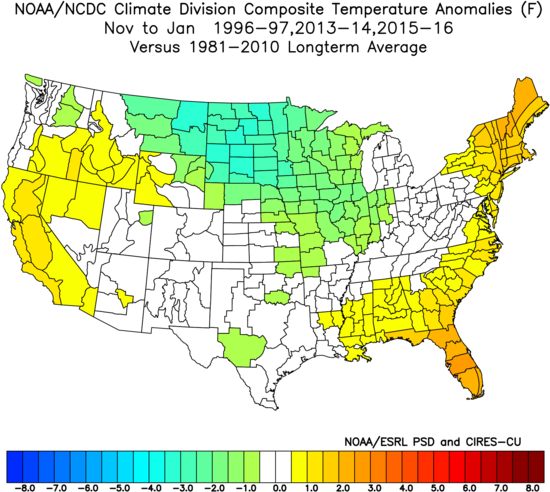
The 500 mb SST analog chart only goes out to November:
.gif)
SST forecast:
.gif)
Temperatures:
.gif)
This is the forecast for the heart of the winter:
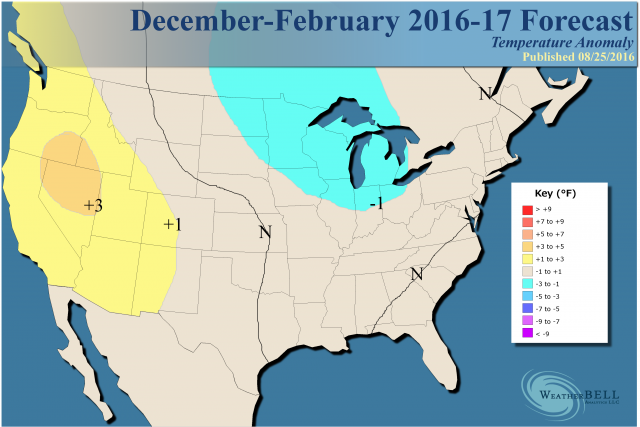
The uncertainty is when the cold will start in earnest. There is evidence both ways.
With the El Niño gone and the La Niña feeble at best, it gives what drove the cold winters of 2013-14 and 2014-15 a chance to overpower the pattern again. Such things as low solar and the state of the QBO are factored into the WeatherBELL Pioneer model, which has this for the winter:
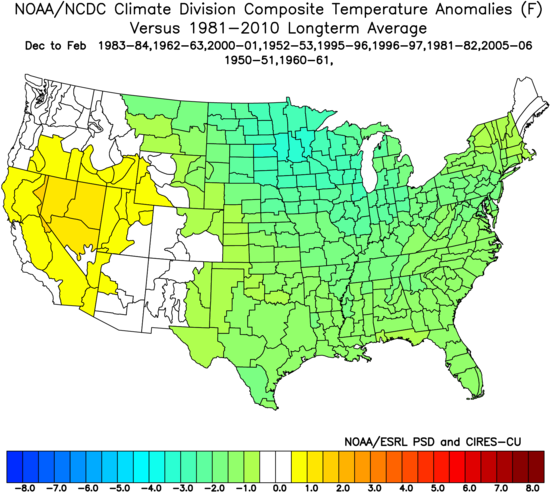
This is very close if not on top of the Euro's implication for winter, which in the cold winters has been incapable of showing actual cool but instead will develop large areas of normal.
Here is the blended analog at 500 mb:
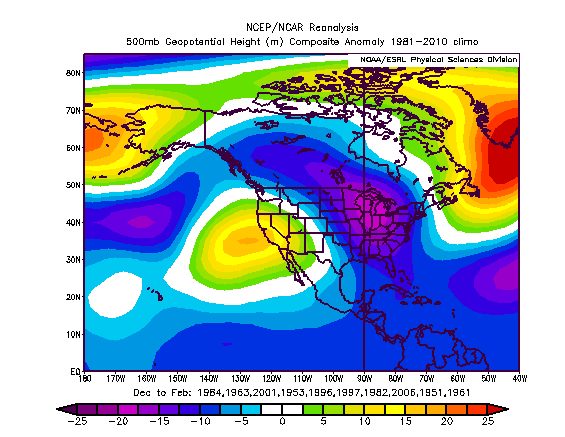
This shows a lot of blocking, as does the Euro.
The combined analog from all the forecasters using the idea of independent consensus:
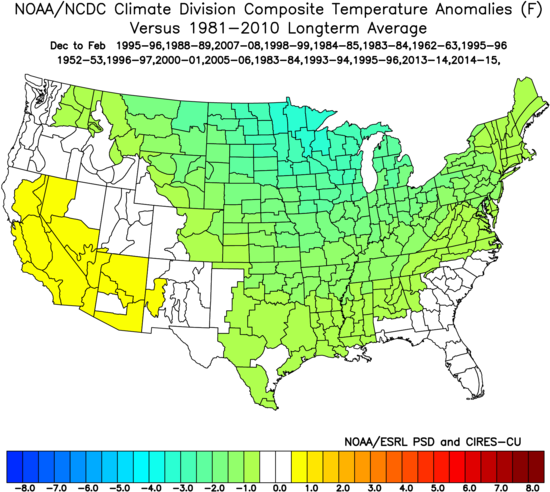
Among us, Tom Downs had the best blend for the El Niño last year. This time, 1995-96 was common among all three forecasters using their favorite methodology. 1983-84 also showed up. Those years had warm eastern Pacific rings, but the western Atlantic was cool. The western Atlantic is very warm now and early in the year, it tends to add to the eastern ridge. As the air masses into the center of the nation get colder, the western Atlantic simply acts like a magnet, as continental cold produces sinking air while warm water is a source for storms. So, the cold wins out and if there is enough blocking it can become quite severe (as we saw 2013-14 and 2014-15).
I remind you that we had a shot of cold into the East last year that produced a -1°F reading in New York City, unheard of in a strong El Niño with no snow on the ground. The problem is the cold after the first three weeks of January could not hit and hold, but went back and forth. After the warm December, the results were skewed because how warm it was in the first month of the winter. Now, without that El Niño involved, the infamous warm blob (that we jumped on in 2013-14) is still there:
.png)
The forecast on the Euro is echoed by the CFSv2:
.gif)
The Euro has less cool in the tropical Pacific, but there's the warm ring in the Gulf of Alaska and the natural place for the upper low to the south of the Aleutians with the cool pool.
The CFSv2 comes up with this at 700 mb:
.gif)
The Euro has more Greenland blocking and the trough over the Great Lakes underneath (in classic -NAO fashion).
It's going to be interesting to watch this, because the CFSv2 has some wild runs, some cold, and others like its most recent, with an El Niño. It's funny that the Nino3.4 forecast doesn't look like a La NIña:
.gif)
The point is this is not going to be a big La Niña, and the kind of features that lead to cold and snow have a chance to take over this winter like 2013-14 and 2014-15.
That being said, last years' star, Tom Downs, has reservations about the warmth of the Atlantic (as do I). The argument from Tom is that there could be warmth into January like 2014-15 (remember "Deflate gate" was near 50° in the second weekend in January). This chart from our meteorological Moses, Joe D'Aleo, shows the worry about what the different major SST features can give, given the SST forecast on the NMME model:
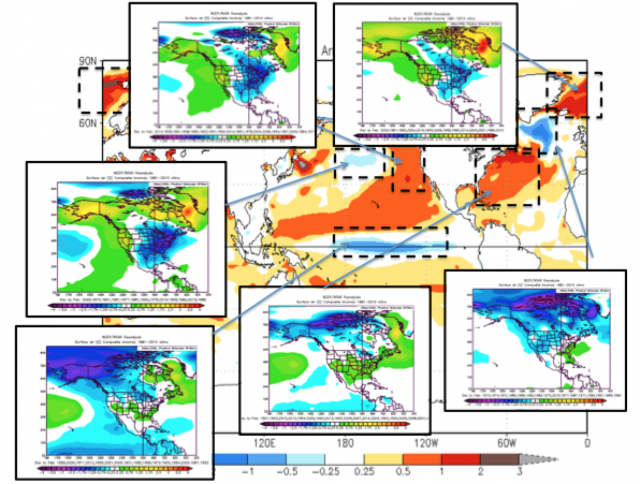
The forecasted North Pacific SST pattern tends to bring a warm West and a cold East. However, the western Atlantic SST pattern tends to bring a warm East. The Pacific looks opposite to what it usually looks like when the Atlantic is warm! The cool pool in the central Pacific and the warm Pacific ring usually give a frigid eastern winter. The central Pacific La Niña with a western Atlantic warm pattern tends to pump the ridge in the Southeast. So we can't go as cold as we see in the analog years.
The "sensible" analog:
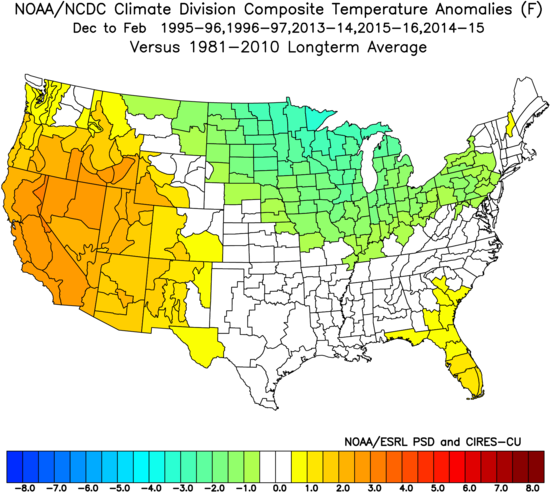
The back half of winter, January-March, is expected to be colder across the East.
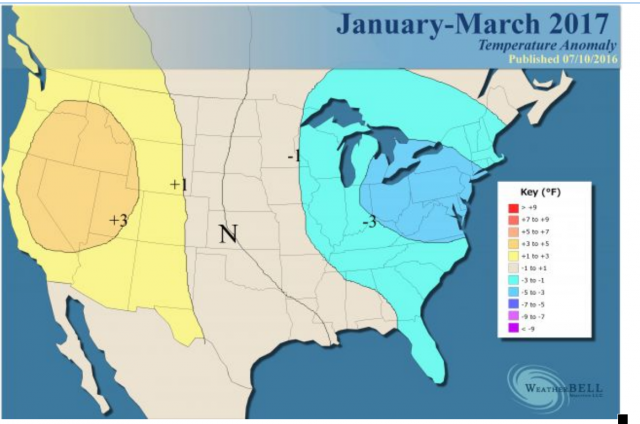
For January-March, I doubled the pure analogs, and I threw in 2012 and 2014:

Snowfall
The snowfall outlook remains the same (first to last flake) as the one issued in July:
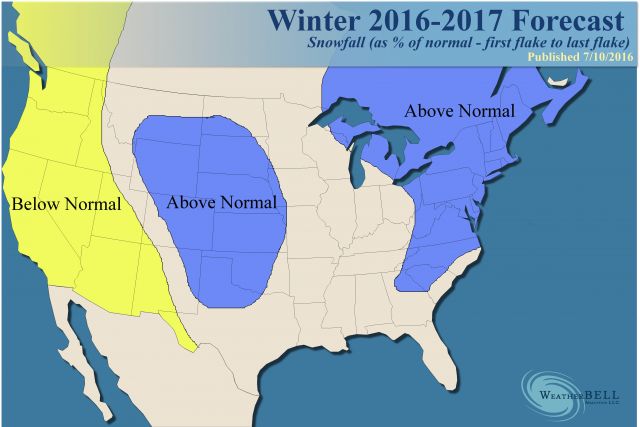
The Verdict
While there is considerable uncertainty, signs point to a late start to the winter season. There could be some cold intrusions in November and December all the way to the East Coast. We are most certain about the back half of winter but if it comes on quicker, than this could be a big ticket winter.